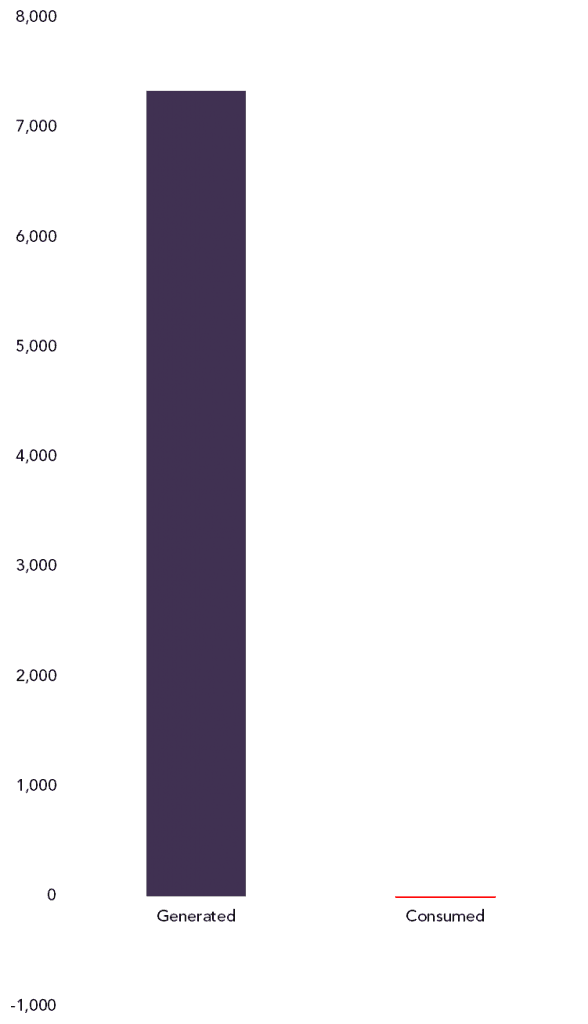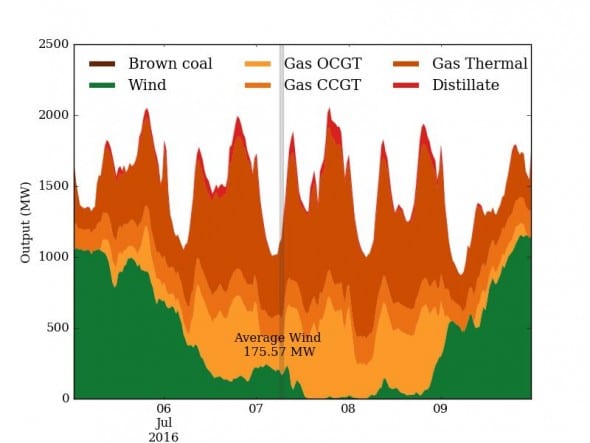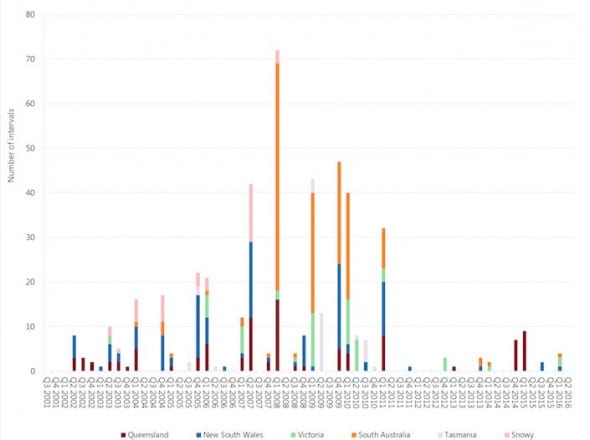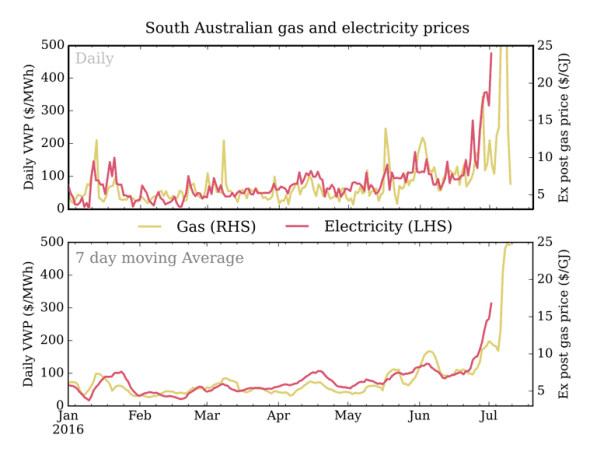The front page “exclusive” story suggests that, at one stage, the state’s wind turbines were drawing electricity from the grid just as the state was experiencing a shortage, but the numbers it quotes are so ridiculously wrong it is almost laughable. Almost, but for the fact that so many people believe them.
The story, by The Australian‘s bureau chief Michael Owen, suggests that the state’s wind turbines were “producing about 5,780MW” between 6am and 7am, but by mid afternoon were producing “negative 50MW”.
As this analysis from Ron Brakels observes, the Murdoch media is struggling with its energy terminology, apparently not knowing the difference between capacity and output.
Let’s just make one thing clear: The state’s wind turbines cannot produce 5,780MW because they only have a combined capacity of 1,600MW. There’s not even 5,780MW of wind capacity in the whole country.
No matter, let’s presume that what Owen meant was MWh (megawatt hours) – the total being produced over a set period of time. But even here he has got the numbers hopelessly wrong. Between 6am and 7am, according to data provided by the Melbourne Energy Institute, and sourced from the Australian Energy Market Operator, the output totalled around 178MWh.
Oops.
And the negative output? 50MW? Again, according to AEMO data, the biggest negative point (five minute interval) was 1.8MW, at 2.20pm. The total, between 2pm and 3pm, was a negative 0.09MWh. There were no negative output points at 1pm, as Owen claims.
Now, the critics will no doubt say that, gosh, wind wasn’t able to produce much in that period, so it must be useless. But in that week, a lot of coal-fired power wasn’t available either, with 3,200MW of units shut down at Stanwell, Liddell, Yallourn, Eraring , Gladstone, Hazelwood and even Loy Yang A – apparently due to coal quality issues.
(Boy, have there been some problems in coal supply recently. The AER, in a previous report on electricity prices, noted how Loy Yang B had suddenly withdrawn 480MW of capacity – a whole unit – because of “supply” issues. The mine is right outside the front door. The withdrawal helped push up prices by around 50 per cent).
Clearly, The Australian is not trying hard enough to get a broader perspective, and acknowledge the role of gas prices, problems with transmission wire infrastructure, and other factors – as we’ve noted here and here.
Economist Judith Sloan, a contributor to The Australian whose previous attempt to assess the renewable energy target we severely criticised here, took another swipe this week.
Sloan was upset about the price spikes that went up to about $1,000/MWh during the period. “How could this happen? How could it go so wrong for South Australia?” she wrote.
“South Australia is paying a heavy price for its misguided energy policy, potentially leading to the further deindustrialisation of the state while also reducing its citizens’ living standards. But the real tragedy is that this outcome was entirely foreseeable.”
Well, no, no, no, no and no. As we wrote yesterday, South Australia used to have these sorts of price spikes as a matter of course, before wind and solar even turned up, because of the reliance on expensive gas, and the supply constraints of being at the end of the grid. (This graph below shows the number of price spikes above $5,000/MWh).
As energy minister Tom Koutsantonis told the ABC today, that’s precisely why they encouraged investments in wind and solar, to bring costs down, and that has largely succeeded.
And here’s another graph from the MEI, just to reinforce the link between rising gas prices and rising electricity costs. But this is not something that The Australian has chosen to focus on.
To adapt an old expression, there are lies, damned lies, and the Murdoch media, particularly when it comes to writing about renewable energy (and climate change for that matter). So much so, we might have to launch a new website – or at least a new section – to produce a daily fact-check. We think we’ll call it, The UnAustralian.

Another myth you will often hear, in the conservative press usually, such as The Daily Mail on this occasion, is that wind turbines generally consume as much as they produce. Again, nonsense.
This vertical graph to the right shows how much wind is produced by a single turbine, and how much it consumes. If you got to this link, there is another graph that shows how much fossil fuel plants use of their own energy. If they ever work out a way to do CCS economically, that percentage will sky-rocket.
Editors note: This story has been updated from original to include the gas price chart.





